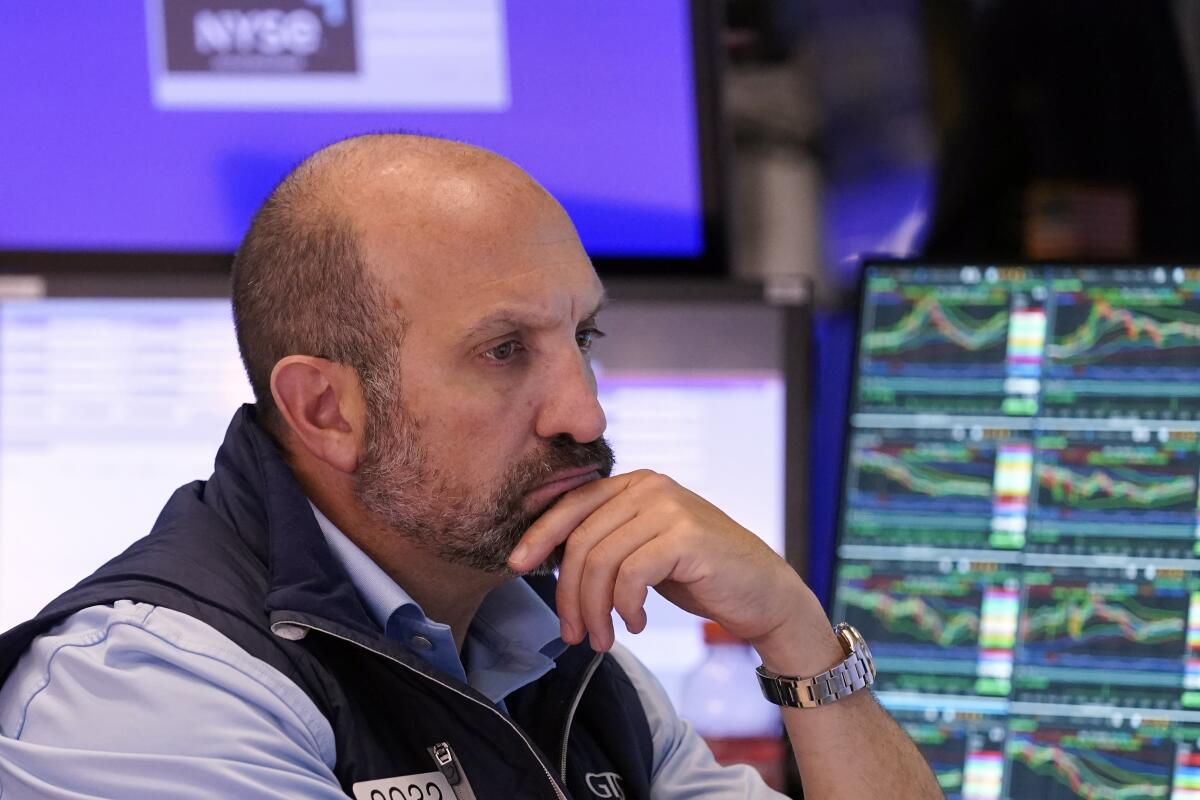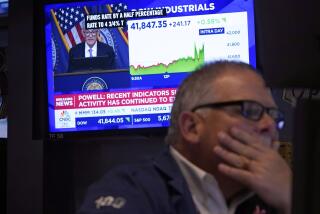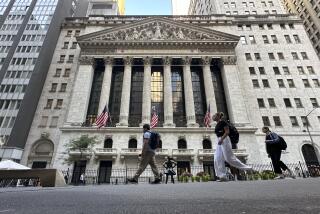Dow drops 600 points on weak jobs data as a global sell-off whips back to Wall Street

NEW YORK — Stocks tumbled Friday on worries the U.S. economy could be cracking under the weight of high interest rates meant to whip inflation.
The Standard & Poor’s 500 sank 1.8% for its first back-to-back losses of at least 1% since April. The Dow Jones industrial average dropped 610 points, or 1.5%, and the Nasdaq composite fell 2.4% as a sell-off for stocks whipped all the way around the world back to Wall Street.
A report showed that hiring by U.S. employers slowed last month by much more than economists expected; it sent fear through markets, with both stocks and bond yields dropping sharply. It followed a batch of weaker-than-expected reports on the economy from a day earlier, including a worsening for U.S. manufacturing activity, which has been one of the areas hurt most by high rates.
It was just a couple of days ago that U.S. stock indexes jumped to their best day in months after Federal Reserve Chair Jerome H. Powell gave the clearest indication yet that inflation has slowed enough for rate cuts to begin in September.
Now, worries are rising that the Fed may have kept its main interest rate at a two-decade high for too long. A rate cut would make it easier for U.S. households and companies to borrow money and boost the economy, but it could take months to a year for the full effects to filter through.
“The Fed is seizing defeat from the jaws of victory,” said Brian Jacobsen, chief economist at Annex Wealth Management. “Economic momentum has slowed so much that a rate cut in September will be too little and too late. They’ll have to do something bigger than” the traditional cut of a quarter of a percentage point “to avert a recession.”
Traders are now betting on a 70% probability that the Fed will cut its main interest rate by half a percentage point in September, according to data from CME Group. That’s even though Powell said Wednesday that such a deep reduction is “not something we’re thinking about right now.”
Of course, the U.S. economy is still growing, and a recession is far from a certainty. The Fed has been clear about the tightrope it’s walking since it started hiking rates sharply in March 2022: Being too aggressive would choke the economy, but going too soft would give inflation more oxygen.
While refusing to claim victory on either the jobs or the inflation fronts on Wednesday, before the discouraging economic reports hit, Powell said Fed officials “have a lot of room to respond if we were to see weakness” in the job market.
“Yes, the economy is weakening, but I am not convinced there is enough evidence that the data so far is a death knell for the economy,” said Nate Thooft, senior portfolio manager at Manulife Investment Management.
U.S. stocks had already appeared to be headed for losses Friday before the disappointing jobs report thudded onto Wall Street.
Several big technology companies turned in underwhelming profit reports, which continued a mostly dispiriting run that began last week with results from Tesla and Alphabet.
Amazon fell 8.8% after reporting weaker revenue for the latest quarter than expected. The retail and tech giant also gave a forecast for operating profit for the summer that fell short of analysts’ expectations.
Intel dropped even more, 26.1%, for its worst day in 50 years, after the chip company’s profit for the latest quarter fell well short of forecasts. It also suspended its dividend payment and forecast a loss for the third quarter, when analysts were expecting a profit.
Apple held steadier, up 0.7%, after reporting better profit and revenue than expected.
Apple and a handful of other major tech stocks known as the “Magnificent Seven” were the main reasons the S&P 500 set dozens of records this year, in part on a frenzy around artificial intelligence technology. But their momentum turned last month on worries that investors had taken their prices too high.
Friday’s losses for tech stocks dragged the Nasdaq composite 10% below its record set last month. A drop of that magnitude is what traders call a “correction.”
Helpful for Wall Street, other areas of the stock market beaten down by high interest rates began rebounding sharply last month when tech stocks were regressing, particularly smaller companies. But they tumbled too Friday on worries that a fragile economy could undercut their profits.
The Russell 2000 index of smaller stocks dropped 3.5%, more than the rest of the market.
All told, the S&P 500 fell 100.12 points to 5,346.56. The Dow dropped 610.71 points to 39,737.26, and the Nasdaq composite fell 417.98 points to 16,776.16.
In the bond market, Treasury yields fell sharply as traders forecast deeper rate cuts coming from the Federal Reserve. The yield on the 10-year Treasury fell to 3.79% from 3.98% late Thursday and from 4.70% in April.
In stock markets abroad, Japan’s Nikkei 225 dropped 5.8%. It’s been struggling since the Bank of Japan raised its benchmark interest rate on Wednesday. The hike pushed up the value of the Japanese yen against the U.S. dollar, which could hurt profits for exporters and deflate a boom in tourism.
Chinese stocks fell as investors registered disappointment with the government’s latest efforts to spur growth through various piecemeal measures instead of hoped-for infusions of broader stimulus. Stock indexes dropped by more than 1% across much of Europe.
Commodity prices also had a rough ride this week. Oil prices leaped after the killings of leaders of Hamas and Hezbollah fueled fears that a widening conflict in the Middle East could disrupt the flow of crude.
But prices fell back Thursday and Friday on worries that a weakening economy would burn less fuel. A barrel of benchmark U.S. crude dropped back below $74 on Friday after coming into the week above $77.
Choe writes for the Associated Press.
More to Read
Inside the business of entertainment
The Wide Shot brings you news, analysis and insights on everything from streaming wars to production — and what it all means for the future.
You may occasionally receive promotional content from the Los Angeles Times.










